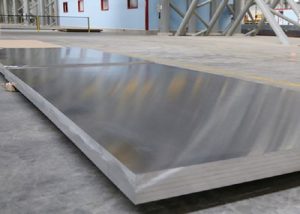Aluminum is a versatile and widely used metal in different industries. It is known for its lightweight, 부식 방지, and thermal conductivity properties, making it an excellent material for manufacturing various products. The production of aluminum sheets has come a long way, and technological advancements have played a significant role in improving the process.
Advanced Melting Techniques
One of the essential steps in producing aluminum sheets is melting. Melting is the process of converting the raw aluminum material into molten aluminum that can be molded into different shapes. With advanced melting techniques, the production of aluminum sheets has become more efficient and cost-effective. One such technique is the electromagnetic field stirring (EMFS) technique. This technique involves the use of electromagnetic fields to stir the molten aluminum, resulting in a more uniform alloy composition. This technique has been shown to reduce the formation of inclusions in the final product, which can weaken the material’s mechanical properties.
Improved Rolling Technology
After melting, the molten aluminum is cast into large slabs, which are then rolled into thinner sheets. Rolling is a crucial step in the production of aluminum sheets as it determines the thickness and quality of the final product. The latest rolling technology involves the use of advanced computer-controlled mills that can roll the aluminum to precise thicknesses. These mills are equipped with high-tech sensors that can detect any defects or irregularities in the aluminum sheets and correct them during the rolling process. This ensures that the final product is of the highest quality and meets the required specifications.
Enhanced Surface Treatment
Surface treatment is another crucial step in the production of aluminum sheets. The surface of the aluminum sheets must be free from any contaminants or defects that could affect its performance. Advanced surface treatment techniques, such as electrochemical etching, have been developed to improve the surface quality of the aluminum sheets. Electrochemical etching involves using an electric current to remove a thin layer of aluminum from the surface, creating a micro-roughness that improves adhesion between the aluminum and any coatings or adhesives applied to it. This technique results in a better surface finish, improved corrosion resistance, and enhanced bonding strength.
Digitalization and Automation
Digitalization and automation have revolutionized the production of aluminum sheets. The latest production facilities are equipped with advanced sensors, cameras, and control systems that monitor and regulate the production process. These systems can detect any defects or irregularities in the aluminum sheets and take corrective actions in real-time. Automation has also reduced the need for manual labor, making the production process more efficient and cost-effective. Digitalization has enabled the use of data analytics and artificial intelligence to optimize the production process, resulting in higher yields, reduced waste, and improved quality.
Green Production Processes
Environmental concerns have led to the development of more sustainable and eco-friendly production processes for aluminum sheets. Advanced technologies, such as inert anode cells, have been developed to reduce carbon emissions during the production of aluminum. Inert anode cells use anodes made of materials that do not react with the electrolyte, eliminating the need for carbon anodes that release carbon dioxide during production. This technology reduces greenhouse gas emissions and lowers the energy consumption of the production process.


